The world has been reborn.
Last month’s release of DC Universe: Rebirth #1 kicked off a new era of storytelling for the publisher. The house that gave us Batman and Superman is looking to make up for the mistakes of the New 52 canonical reboot, reinstating old plot points that were erased from their timeline and even bringing back old versions of classic characters that had been discarded in favor of newer, “edgier” ones.
Rebirth #1 promised us character driven stories filled with more heart than fist. Can they deliver? Each week, Kyle Pinion and Alex Lu will dig into the Rebirth titles kicking off DC Comics’ line overhaul to find out. This is week three of DC Reborn.
Note: the reviews below contain **spoilers**. You’ll find our buy/pass recommendation for this book near the bottom of the article, so if you’re looking for a quick guide before heading out to the store, you’ll find it there!
Previous Reviews:
Week One— BATMAN:REBIRTH, GREEN ARROW: REBIRTH, SUPERMAN: REBIRTH, and GREEN LANTERNS: REBIRTH
Week Two— ACTION COMICS, AQUAMAN: REBIRTH, DETECTIVE COMICS, FLASH: REBIRTH, WONDER WOMAN: REBIRTH
(Editor’s Note: We’ve switched up the formatting on the DC Reborn series a bit. We’ll still be reviewing all the series that come out each week, but we’ll be posting one review per hour instead of all of them at once. We’ll also have a round up post and final thoughts at the end of the day. Happy reading!)
 Batman #1
Batman #1
Writer: Tom King Penciller: David Finch
Inker: Matt Banning Colorist: Jordie Bellaire Letters: John Workman
Kyle Pinion: Alright Alex, let’s talk Week 3. I don’t know about you, but the first one I cracked open was Tom King’s first actual Batman issue. So let’s start there…what did you think? Did it live up to the expectations set by the Rebirth issue?
Alex Lu: To be honest, Kyle, I don’t think I was as high on Batman: Rebirth #1 as you were, so coming into Batman #1 my bar was sufficiently lower for Tom King and David Finch than it otherwise would have been, considering the strength of the former’s recent line of work. That said, Batman #1 soared above and beyond that lowered bar and well made up for the faults of its prologue. I thought this was King at his finest, crafting a heartfelt take on the Dark Knight that injects a lot of King’s military background into the mix. We’ve seen Batman as a brawler and a detective– King wants to show us Batman the tactician. The personal nature of the work brings it together and gives me hope for the run to come.
What did you think, Kyle?
Kyle: What struck me hardest, reading this issue, was just how difficult it is to actually do anything *new* with the character. And to that extent, it allowed me to reflect what each recent “head Batman writer” has brought to the mythos, be it Morrison’s take on Batman’s psychology and history, Snyder’s focus on Gotham as a hub of ancient, thriving evil, and now what I think King is headed towards, the newness of which I rather admired: Gotham’s perspective on being protected by a hero with no powers at all. Throughout the issue, we get references to Bruce seeking the assistance of Clark (though the reference to which had me a little confused about the continuity of the story I was currently reading) or Hal and them being unable to join in, or the outright statement from a citizen on the crashing plane: “No, we’re in Gotham! Who’s going to catch you in Gotham?” Down to the final moments, when Bruce is nearing a potential end – in King’s first issue no less – and he’s saved by Gotham’s two newest heroes, I think we were treated to what almost comes across as an overture of King’s run will be all about, and frankly I’m so excited about where this might go. Did those same thoughts cross your mind at all? Or did you have a different take on what King’s treatise might be here?
Alex: To be honest, your take on the issue didn’t strike my mind. Thinking about it, though it absolutely hits the nail on the head. Batman has always been successful at defending his city from threats both large and small– from localized crime run by white collar crooks like The Penguin to cosmos-ending threats like Darkseid. I’m struck by the way you refer to Gotham as a living organism, as it’s definitely an idea that carries itself over from Snyder’s take on the character to King’s.
However, to localize the issue a bit, I think King is really interested in disproving the commonly-held idea that Batman can do anything. Batman doesn’t die when he gets hit by the Omega Effect in Final Crisis. He has a plan for that and goes back in time instead! In Snyder’s Endgame arc on Batman, not even the entirety of the Justice League can take down the Dark Knight. I was initially nonplussed by the idea that, after all this, Batman could possibly think he would die after a simple plan crash. However, upon reflection, I realize that this isn’t an absurdity of King’s plot, but rather one of most other writers’. There’s a conscious powering-down of Batman here– his core character traits and skills are still the same, but King presents Batman as, well, a man.
I’m intrigued by the introduction of superpowered Gotham and Gotham Girl to the mix, as it presents a clear foil to the newly-humanized caped crusader. What’d you think of their initial appearance, Kyle? Friend or foe?
Kyle: Look, I’m just happy that the possibility of them being Nite Owl and Silk Spectre decreases a good deal due to the fact they have super powers.
But seriously (or more so anyway), I thought, weird names aside – Gotham Girl…ehh – they’ll make for effective enough foils for the themes that will underpin his run. We’ll obviously need to see more of them, and get some sense of their background and what they might bring to the city. Could you imagine what Gotham would have been like with Superman and Supergirl patrolling on a regular basis? But, I’m excited to learn more, they have a fun throwback design and while I imagine the chances of them sticking around beyond this initial arc, much less King’s whole run, seem pretty slim, their mystery has me coming back for more. But I’m an easy mark for this.
How about the other half of this team? Did King’s script challenge Finch in a way that excites you?
Alex: Frankly, I’ve never been David Finch’s biggest fan. I don’t think he’s necessarily a bad artist, but there are certain elements of his style that consistently leave me feeling cold. Credit where credit is due though, his work on this issue of Batman is more hit than miss for me. I love the way that he renders vehicles and cityscapes, and Gotham is full of them. I recently saw some artists complaining about the unnecessary complexity of Batman’s new design, courtesy of Greg Capullo, but I think Finch’s decision to simplify more ornamental details like the yellow outline around his bat symbol in some scenes is a non-issue that proves the design is easily workable. If he’s going to be putting this book out biweekly, I’d rather lose small touches like this than delay entire issues.
However, I have to say that I really despise the way that Finch draws facial expressions. His linework is overbearing on closeups of faces. It ages every character in this book by a good ten years and just makes some normal people look grotesque. The man on the falling plan that bemoans the lack of superpowered superheroes in Gotham looks like a monster. I think Finch meant to portray him in anguish, but it looks more like he’s been infected by Joker gas and is about to go on a killing rampage– I actually expected it when I saw that face.
To me, poor facial expressions are a death knell for comics. It’s important that characters be able to visualize how they feel about things, and while I stand by what I initially said about there being more elements of Finch’s art that work for me than those that don’t, I ultimately think this particular flaw knocks the entire book down a peg. Do you think I’m going too far, Kyle?
Kyle: Not at all, I think Finch is a capable artist that when paired with the right inker sees his respective talents enhanced (as with any good penciller really), and my recent exposure to Finch has seen him paired with Richard Friend in Forever Evil and Scott Hanna in Wonder Woman, and there are certain, almost pin-up esque, splashes that always do the job for me. But sometimes, there’s certain anatomical issues that I think cause him to clash with his inkers, particularly in his action sequences. Basically, the smoother the inking job, the better he looks, and I have to hand it to Matt Banning for bringing out the best in Finch here. I was somewhat worried how this would end up looking on the visual-end, especially for a run that I was so very looking forward to, but between Banning doing great inking work and Jordie Bellaire being…let’s face it, one of the best colorists in the business, my fears really should have been assuaged from the beginning.
But I’m surprised to hear that some artists take issue with the complexity of the costume, I mean, at least it doesn’t have bat knee-pads anymore. Easily the nadir of Batman costume design in my book. Also, that new purple cape is pretty nifty!
So, I take it we rather dug this one?
Alex: Oh yes. 100% buy for me. You?
P.S.: I also like the purple cape.
Kyle: Without a doubt, if you don’t, you’re really missing out. But it’s Batman, the chances of you buying it already are pretty good.
Stay tuned throughout the day as we post reviews for Green Arrow #1, Green Lanterns #1, Superman #1, & Titans #1!


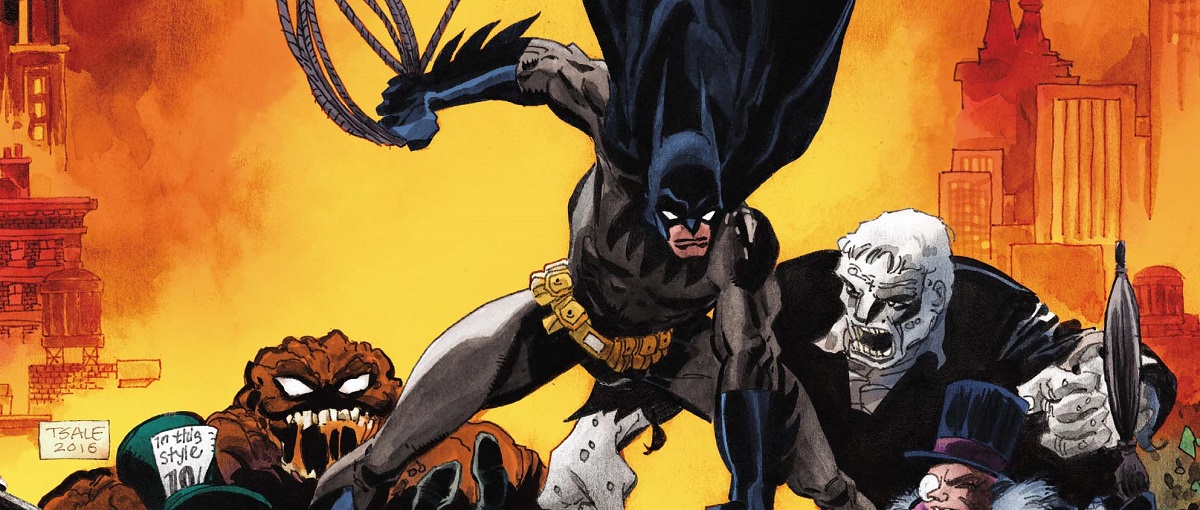
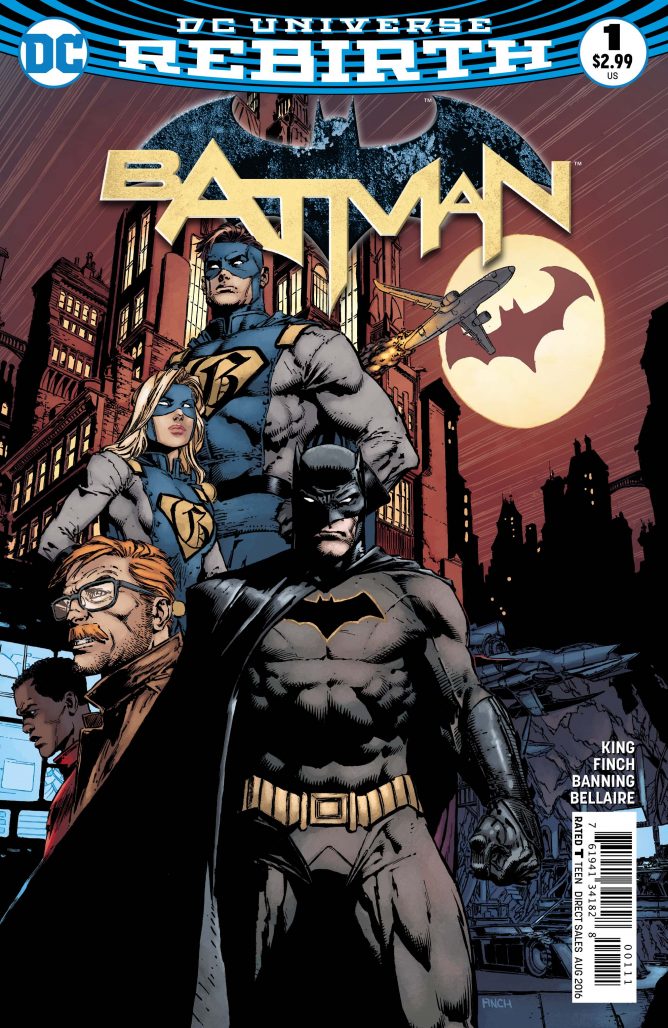 Batman #1
Batman #1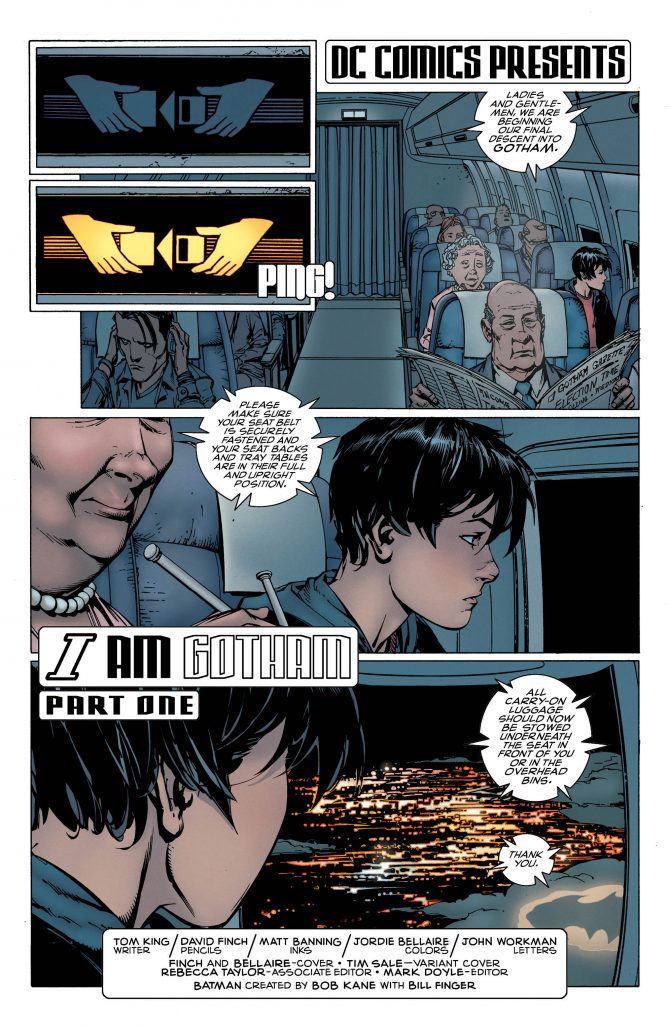
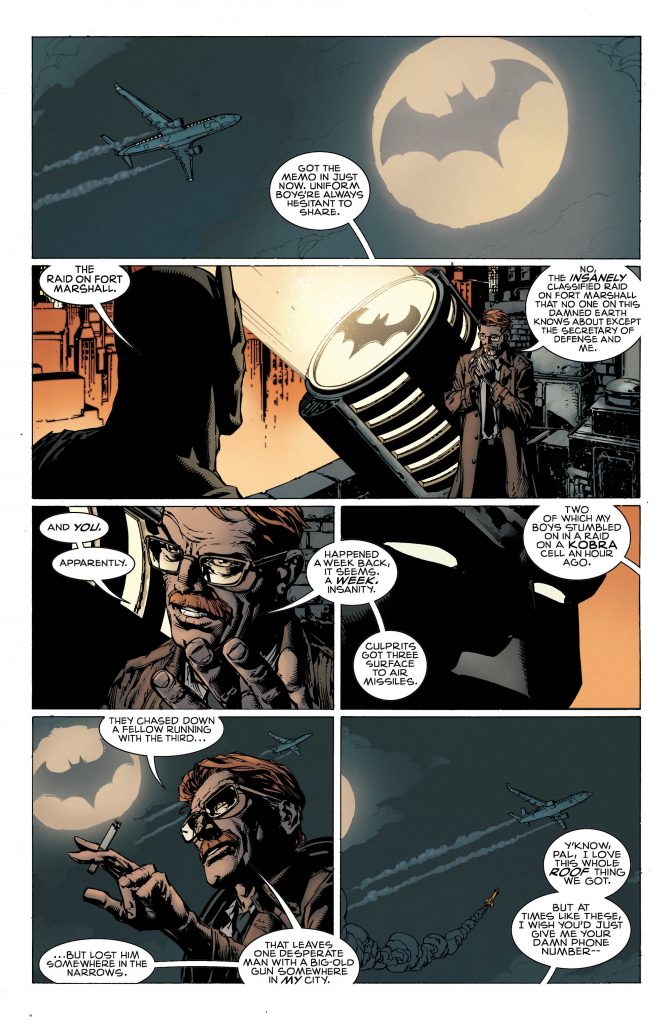
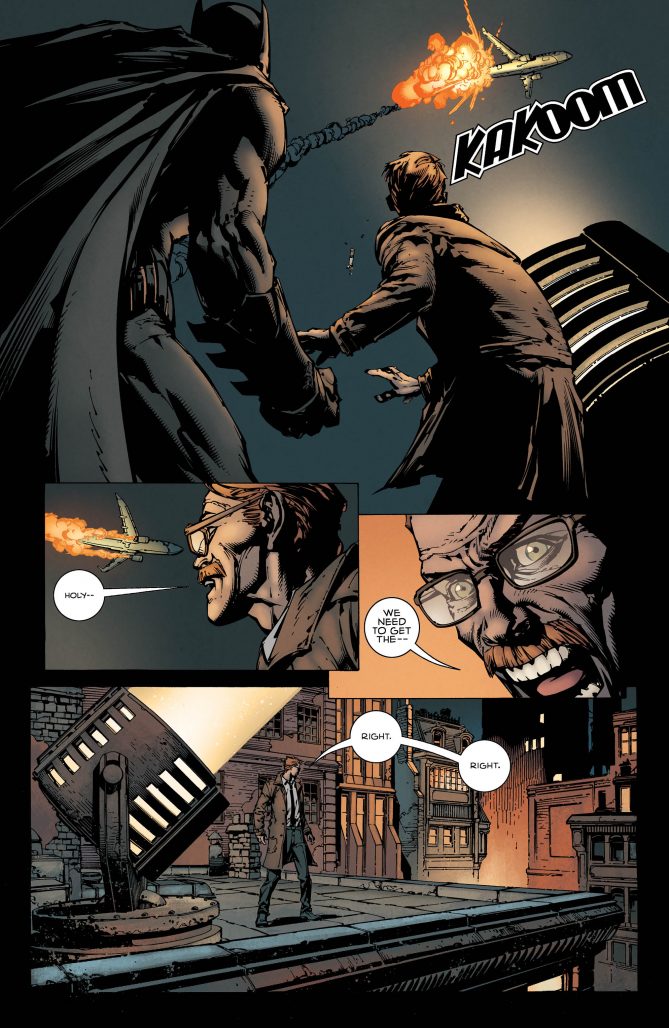
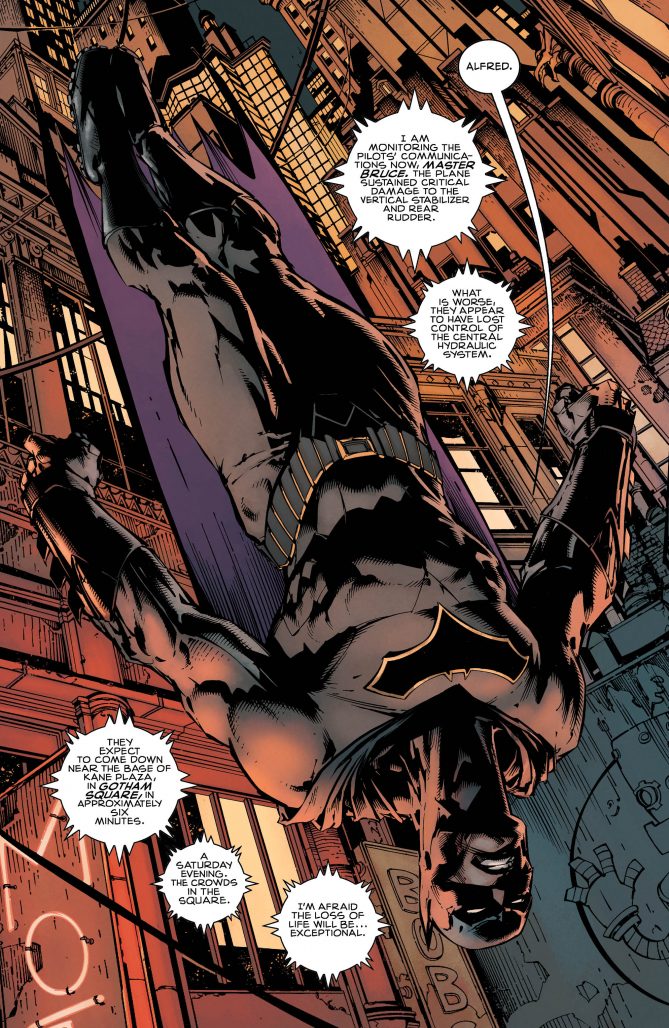





This issue was fun and I loved the design of the Batmobile.
Well, I usually agree with Alex Lu and not with Kyle, but for this issue, I actually completely disagree with Alex.
I liked it, but I think, on the contrary, that Batman has never been so powered-up and inhuman.
I mean, he stops the plane without needing the help of Superman or Green Lantern, he shouldn’t be able to do it (almost) by himself, it’s completely unrealistic. From the start, Batman has a plan to stop the plane, and the plan succeeds (almost) without any adjustments. This is, contrary to what Alex Lu said, the exact proof that “Batman can do anything”. If there were some complications in the rescue, or if Batman almost failed, you could say differently, but here everything works according to plan.
Except from one small detail: the writer wants us to think that Batman almost died. But this doesn’t work, precisely because it is Batman #1, and the reader is well aware that Batman will not be injured so early in a run.
It’s so obvious Batman would not die (or be injured) in this issue that the whole sacrifice thing, contacting his heirs thing, does not work and feel like a cheap way to build tension.
Comments are closed.